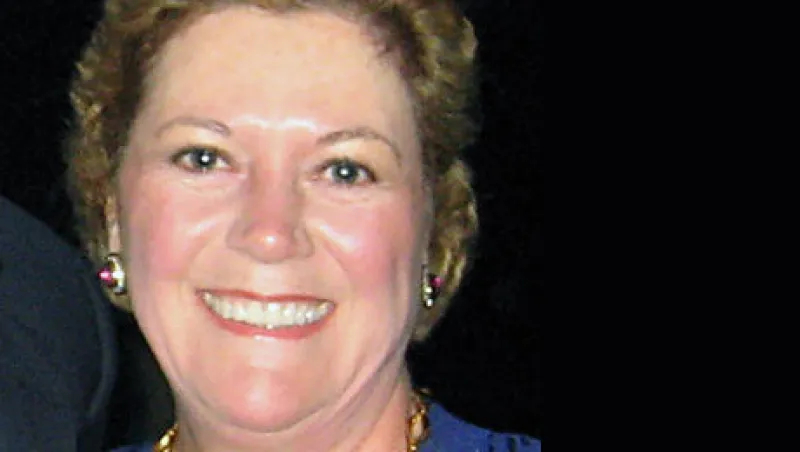Investors like to say that rolling up their sleeves and getting their hands dirty are part of the job. But Anne Pfeiffer, portfolio manager of J.P. Morgan Asset Management’s $20 billion Strategic Property Fund, the largest core real estate fund in the U.S., was in a hard hat almost as often as she combed through financial reports. After turning 60 in 2012, she dragged a cabal of associates on a tour of the 51-story Coast apartments in downtown Chicago, which were still under construction and which the fund had financed. Kimberly Adams, one of two portfolio managers who succeeded Pfeiffer following her retirement in October 2013, says the group climbed the exterior hoist used by construction workers as well as endured a harrowing walk up the last three flights of the building on an open stairway. It was the type of walk that Pfeiffer often did to get a bird’s-eye view of her investments.
Pfeiffer’s rigorous due diligence — whether it was pointing out the quality of concrete to supervisors on a project or analyzing numbers — wasn’t for show. It was emblematic of the type of detailed knowledge that she had of the real estate investments in her portfolios. “Anne overwhelmed her competitors and her clients with competence,” says Joseph Azelby, head of global real assets at J.P. Morgan. Kevin Faxon, head of real estate for the Americas, who started as an analyst working for Pfeiffer in 1988, adds, “If you went to see her with an idea, she would expect you to hit your marks on the investment thesis, the problem, and have baseline answers and recommendations. You couldn’t wing it.” The fund returned 8.29 percent annually (1.21 percent ahead of the benchmark) over the ten years ended September 30, 2013.
Pfeiffer, Institutional Investor’s 2014 Outstanding Contribution Award winner in our U.S. Investment Management Awards, started with J.P. Morgan in 1979 and in 1998 took over Strategic Property, a $2 billion core real estate fund at the time. In the clubby world of real estate, she was the rare woman in 1998 as well as in 2012. Pfeiffer died in January 2014 after battling pancreatic cancer. “For Anne to take leadership of the fund was a real example for women,” says Faxon. Pfeiffer also oversaw J.P. Morgan’s U.S. real estate commingled funds, including Special Situation Property Fund, the Alternative Property Fund, the Diversified Commercial Property Fund and the U.S. Income & Growth Fund.
“Anne was an investor with conviction,” says Eric Lang, head of the real assets group for the $124 billion Teacher Retirement System of Texas. “She did things her way.” One of the reasons behind TRS’s now $625 million investment in Strategic Property was Pfeiffer’s construction of a unique portfolio that competitors couldn’t offer. The fund has good exposure to regional malls, for instance, that can be hard to get. “The bottom line is that her fund has been one of the best-performing open-end funds that we’ve invested in,” says Lang.
After being diagnosed with cancer in the summer of 2012, Pfeiffer continued to come into the office until October 2013, remaining private about her health. Only four people at J.P. Morgan knew about her illness. During that time she mentored Adams and Ann Cole, the co–portfolio managers who would take over management of the fund.
Pfeiffer never wavered in her belief that the Strategic Property Fund invest only in high-quality office, industrial, retail and residential real estate. She wanted dominant properties in supply-constrained markets. That philosophy paid off during the 2008–’09 financial crisis when credit froze. As with all open-end real estate funds, investors queued up for redemptions. Pfeiffer was lauded by investors for instantly communicating bad news, even as competitors often did the opposite. Strategic Property’s $2 billion queue disappeared from 2009 to 2010, and Pfeiffer had the cash to take advantage of a real estate fire sale that followed the crisis.






